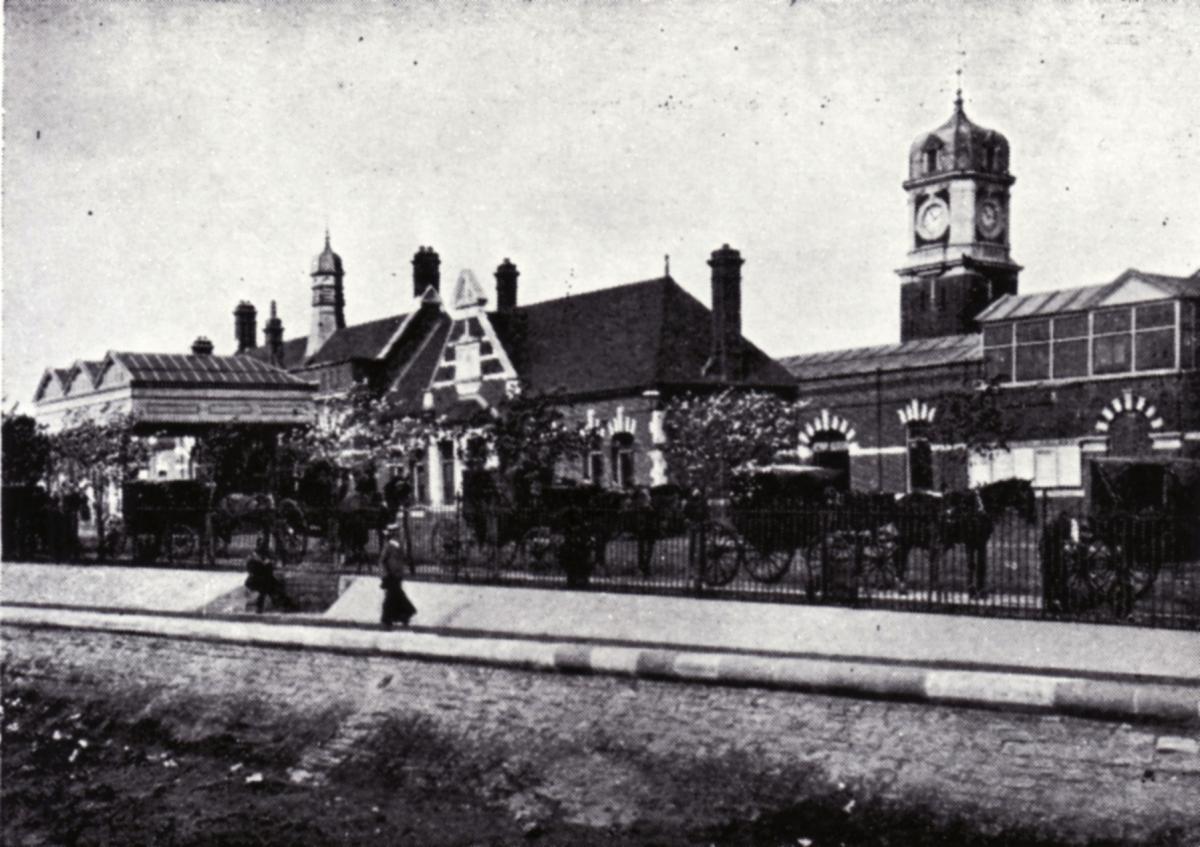A dramatic overnight transformation 90 years ago saw Southampton West station reborn as the modern travel hub we know today as Southampton Central.
The ambitious project, a "triumph of engineering," was carried out with military precision by a dedicated team of 300 Southern Railway men.
In the stark, flickering glare of acetylene flares, a scene of feverish activity unfolded from midnight on a Saturday in June 1935.
The ambitious goal was to complete a monumental transformation of the railway lines between the tunnel end of Southampton West station and Millbrook by 10am the following morning.

A veritable army of skilled labourers, including permanent way men, electricians, carpenters, and general labourers, was assembled from across the region to execute the complex alterations to the tracks.
In a remarkable feat of coordination and sheer hard work, these gangs managed to move an astonishing 200 tons of rails and lay 2,500 new sleepers in just ten hours.
Simultaneously, teams of electricians worked tirelessly to wire the new, state-of-the-art signal box, a critical component of the modernised system.
A report in the Echo captured the dramatic atmosphere of the night: “Blackness of the night and torrential rain added to the drama. Engineers in oilskins and waders superintended the work which was carried through without a hitch.”
Read more:
To facilitate the colossal task, the schedule of the night Hamworthy goods train was advanced by two hours, with the locomotive rumbling over the old tracks at 12:17 am, well ahead of its usual 2:13 am passage. Once the 1:15 am mail train from the Terminus had cleared the section, the tracks were handed over exclusively to the "speed-up men."
They toiled relentlessly until the arrival of the 5:30 am newspaper train from London, by which time the down line had been successfully transitioned and was ready for service.
The Daily Echo noted the unwavering spirit of the workforce: “Although drenched to the skin, the men worked with a will and carried on cheerfully.”
As dawn broke, a temporary booking office on the down platform was swiftly demolished, the cleared site seamlessly integrated into a new section of the platform.
“By 10am the new permanent way bordered the new platforms at both stations, and one of the biggest changeovers in recent years had been effected without inconvenience to a single traveller,” the report proudly declared.

Just a few weeks after this remarkable feat of engineering, on July 7, 1935, the former Southampton West station officially adopted its new, more prominent name - Southampton Central.
The station's history is a fascinating journey in itself.
It first opened in 1847 as Blechynden, a through station on the Southampton to Dorchester line.
In 1858, it was renamed Southampton (West End), and this was later replaced by a new station named Southampton West, a name it held until the 1935 transformation.
Read more:
The 1930s rebuilding saw the station expand from two to four platforms, with the new buildings constructed in the distinctive Art Deco style of the era.
For many Southampton residents, the station, which once featured a landmark clock tower, held a special place in their memories.
In 1976, a reader reminiscing in the Echo recalled a bygone era: “Southampton railway station always brings back many pleasant memories of those days when horse-drawn cabs plied their trade and horse-drawn buses were operated by hotels.”
The writer also painted a picture of the station's elegant surroundings before the devastation of the Second World War: “Opposite the station were two regency houses of pleasing design that had been converted into hotels, the Grosvenor and the York. Both were lost in the Blitz of 1940.”
These recollections serve as a poignant reminder of the ever-evolving landscape of the city and the enduring significance of its central railway hub.









Comments: Our rules
We want our comments to be a lively and valuable part of our community - a place where readers can debate and engage with the most important local issues. The ability to comment on our stories is a privilege, not a right, however, and that privilege may be withdrawn if it is abused or misused.
Please report any comments that break our rules.
Read the rules hereLast Updated: 1st January 1970 12:00 am
Report this comment Cancel